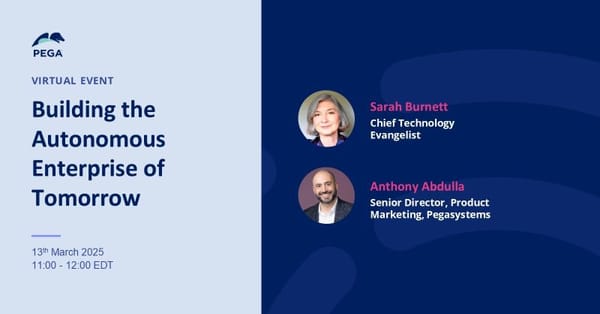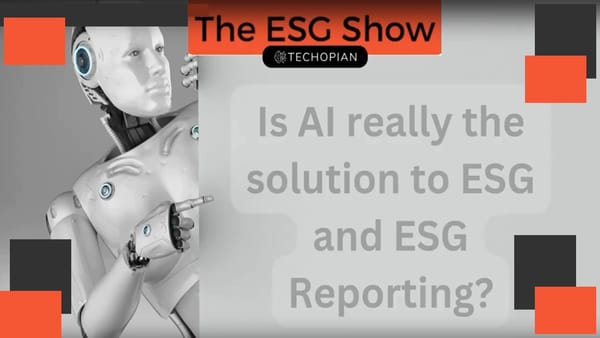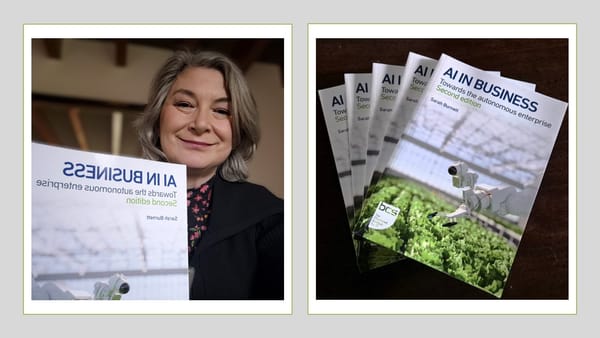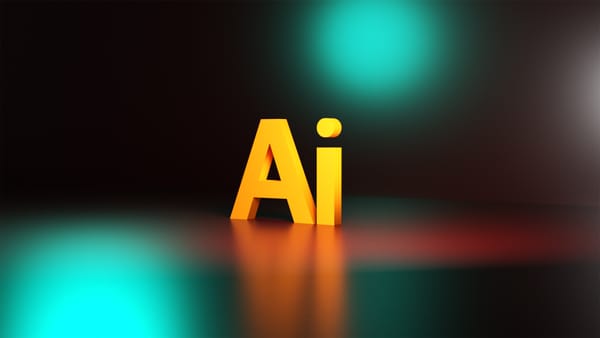A Blueprint for the Future: Automated Workflow Design
In my book, "The Autonomous Enterprise – Powered by AI," I provide many examples of enterprise automation. Here I discuss another type; automation of app workflow design.

In my book, “The Autonomous Enterprise – Powered by AI”, I explore the future landscape as enterprises modernize and embrace smart automation in various forms. From simple task automation to complex machine decision-making, I provide numerous examples that illustrate this exciting evolution. Recently, I discovered another groundbreaking application of automation: generative AI-powered design of workflows via a complementary tool for a LCNC (Low Code No Code) platform.
Pega GenAI Blueprint is the tool, offered by Pegasystems to its customers for free on a SaaS basis. Blueprint is an app design-as-a-service tool that uses GenAI to guide users to create their own blueprints. You can design the workflow for a new app in its collaborative workspace, starting by defining your business needs. It then analyses your requirements and matches them to industry best practice templates that Pega experts have curated, as a starting point. Then it walks you through the workflow design step by step including what needs to get done, who is going to be involved and what data has to be processed. More than 30,000 blueprints have been created by Pega customers already. You can modify the workflow that is the output of Blueprint and in my view is essential because most enterprises have their own ways of doing things. Existing workflows can be imported into Blueprint and edited too. The generative AI part makes suggestions to help the user complete the design process fast.
Pega executives say that Blueprint can automate around 40% of the work needed to design a new application. It also supports collaboration by stakeholders through its sharing features.
Once the design is complete, the application is imported into Pega’s automation platform. From there, it is a matter of prototyping and testing to ensure the application performs as expected.
Given the multitude of processes organizations manage, the ability to edit existing workflows, or start not from scratch but from a best practice template, assisted by generative AI, holds good potential.
Given the multitude of processes organizations manage, the ability to edit existing workflows or start not from scratch but from a best practice template, assisted by generative AI, holds good potential. I believe this represents another significant step toward enterprise autonomy. This is apt as Blueprint nicely fits into Pega’s messaging that is centred on the concept of the autonomous enterprise.
For those who follow my writing, you know I enjoy predicting the future of enterprises. Regarding Blueprint, I foresee a chain of further developments. Let me share some customer feedback first.
"I can see us using Blueprint because we have hundreds of processes that need to be transformed," said the head of digitalization at an insurance company to me at PegaWorld iNspire ’24. The company had recently implemented Pega to accelerate policy renewals, which had been slowed by a new system. By integrating Pega, they improved the speed of the renewal process. They then adopted additional Pega solutions like Sales Automation and went on to establish a framework for prioritizing future improvements. Internal teams propose processes for improvement, prioritized according to this framework. This results in numerous candidate processes for redesign. The manager's comment about adopting Blueprint highlighted its potential for automating the workflow enhancements or designing new improved versions of all these candidate processes.
Many other organizations are undergoing digital transformation. For them, to have the ability to partially automate new workflow designs, based on industry best practices that can then be customised for their organisational needs, must be highly appealing.
Advances in AI, particularly generative AI, are pushing the boundaries of what office-based work activities we can automate. We have seen automatic text, image, video, music and code generation. We can have automated production of meeting notes and their summarisation and translation and have web content produced in a matter of seconds ready optimised for search, on the topic of our choosing. These developments have taken us a long way from the early days of business process automation. Designing new apps for improved workflows is another development that extends our automation capabilities.
I believe what Blueprint offers today is just the beginning of a much larger development.
In the future, we could see Process Intelligence (PI) integrated with templates and generative AI, pushing the automation of the design process even further.
In the future, we could see Process Intelligence (PI) integrated with templates and generative AI, pushing the automation of the design process even further. PI identifies which workflows need improving and where. By feeding these insights into an intelligent workflow design tool like Blueprint, we could eventually see workflows being automatically updated to resolve the identified issues. Over time, we might even reach a point where a continuous automated process improvement cycle can be established. This cycle would start with PI capturing insights and feeding them into a Blueprint-like tool to generate updated and improved workflows. These would then be fed into an automated test and deployment platform to complete the improvement, overseen by a supervising AI or human. What we have today with Blueprint is the first step toward such a development. Consequently, the concept of self-adaptive processes is moving closer to becoming a reality. I discussed adaptive processes in an article for Techopian, published in April 22 here.
Interestingly, Pega executives envision the autonomous enterprise as adaptive, and I believe this will become a reality.
These rapid technological advances mean we are living in historic times. Organizations must keep up or risk becoming history themselves.
I partnered with Pega to conduct interviews and provide my perspective on its products and PegaWorld iNspire 2024! Watch this space for more posts to come.




